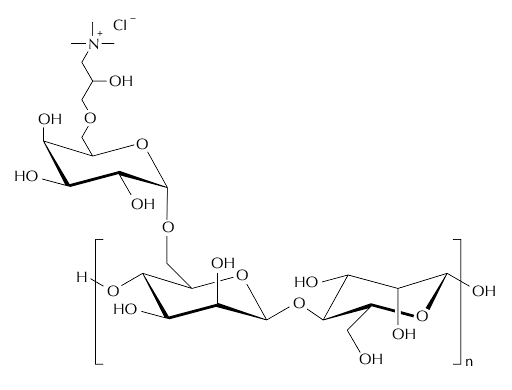Guar hydroxypropyltrimonium chloride is a conditioning ingredient that is used in both skincare and hair care products.
Guar hydroxypropyltrimonium chloride is a water-soluble ingredient that is derived from plant-based sources. It is generally used in hair care products as it helps to reduce static while retaining volume.

Guar Hydroxypropyltrimonium Chloride
the good: Helps to condition the skin and reduce static created between hair strands, reducing frizz and flyaways.
the not so good: Nothing to report here, Guar hydroxypropyltrimonium chloride is actually a widely used ingredient in the skincare industry and is particularly useful for hair care products.
Who is it for? All skin types except those that have an identified allergy to it.
Synergetic ingredients: Works well with most ingredients.
Keep an eye on: Nothing to keep an eye on here.
Why Is Guar Hydroxypropyltrimonium Chloride Used For?
Guar hydroxypropyltrimonium chloride is a conditioning agent for both the skin and hair which means that it helps to moisturize. While guar hydroxypropyltrimonium chloride is sometimes used in skincare formulations it is more often used in hair care products.
Guar hydroxypropyltrimonium chloride is most widely used in hair care products due to the added benefit of helping to reduce static between hair strands. This helps to reduce frizz and minimize flyaways. It does this through its positive charge, neutralizing the negative charges on the hair that cause static. Guar hydroxypropyltrimonium chloride is also a lightweight ingredient as is often used in place of other anti-static ingredients that are heavier, weighing the hair down.
Is Guar Hydroxypropyltrimonium Chloride Safe?
The Cosmetic Ingredient Review Expert Panel, a group responsible for evaluating the safety and efficacy of skincare and cosmetic ingredients has reviewed the available data on guar hydroxypropyltrimonium chloride. Based on the available research the Expert Panel determined that guar hydroxypropyltrimonium chloride is safe for use. There was no toxicity or carcinogenicity issues present with this ingredient or related ingredients.
References:
CIR, 2012. ‘On the Safety Assessment of Galactomannans As Used in Cosmetics’, Cosmetic Ingredient Review.







